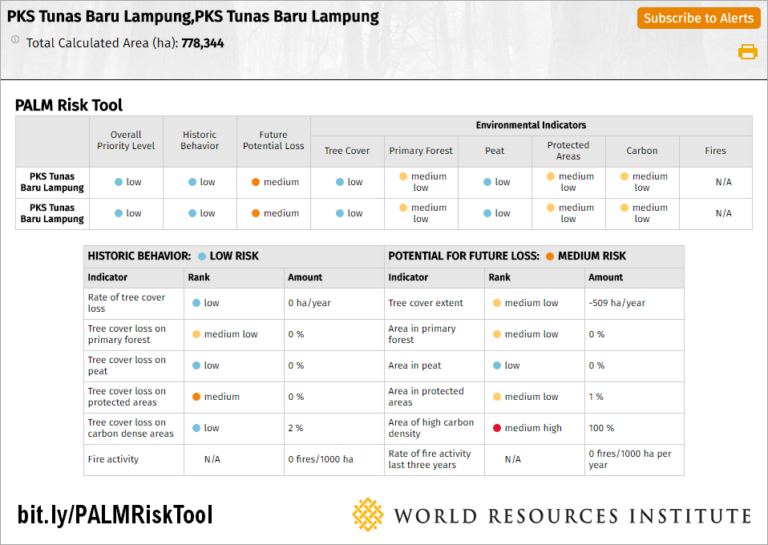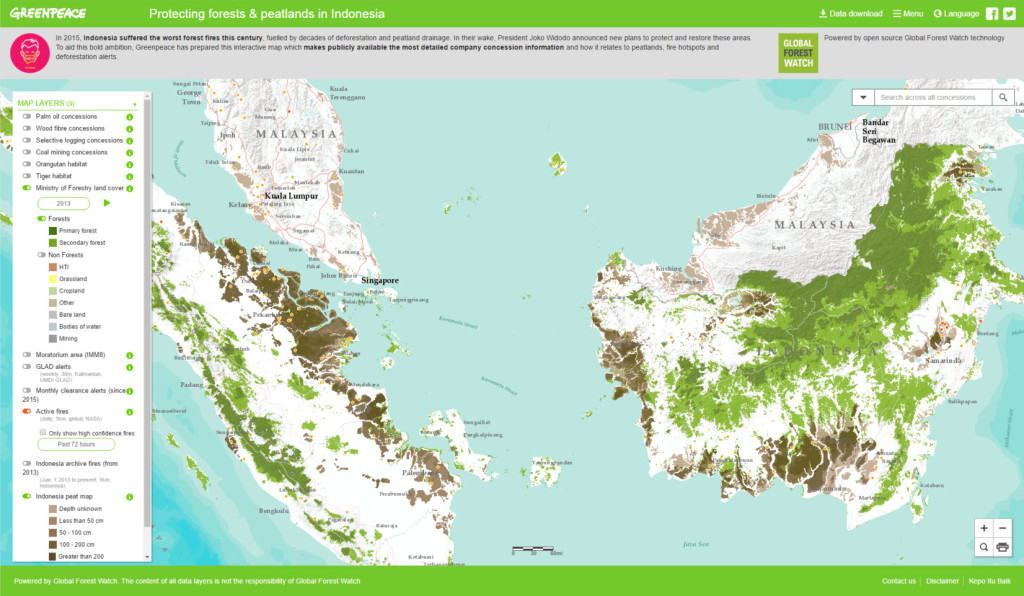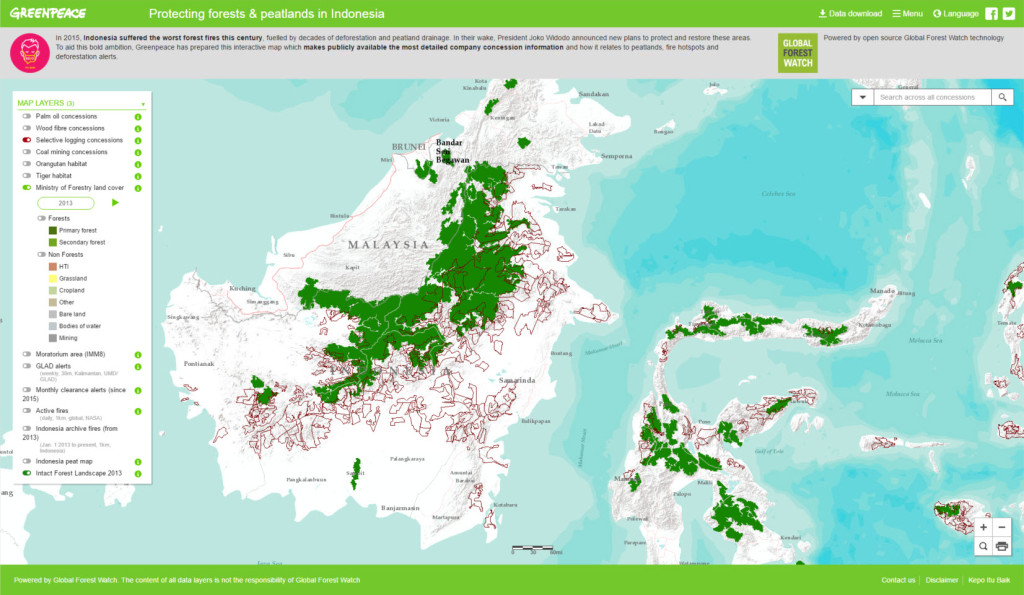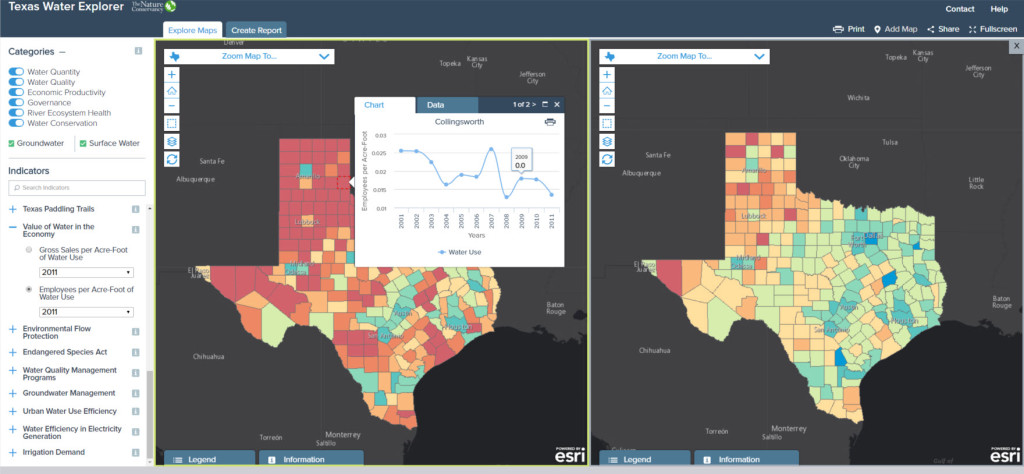Global water supply is rapidly becoming a topic that crosses international borders and stretches across watersheds, communities, and livelihoods. Well known organizations such as the United Nations, the World Wildlife Foundation and The Water Project all recognize the threat of water shortage on generations to come and that these threats will have effects far beyond environmental. These organizations estimate that:
- today, nearly one billion people do not have access to safe drinking water (The Water Project)
- by 2025, up to two-thirds of the world’s population may have water shortages (World Wildlife Foundation)
With a clear motive and call for action, World Resources Institute and Blue Raster teamed up to create Global Forest Watch Water, allowing users to quickly identify risks to clean water in areas of deforestation, forest fires and soil erosion and to identify cost-effective natural infrastructure solutions. This public facing tool provides the means for governments, businesses, financing, institutions, and communities to create a plan for action that is educated, sustainable, and effective.
“Global Forest Watch (GFW) Water is a global mapping tool and database that examines how forest loss, fires, unsustainable land use and other threats to natural infrastructure affect water security. Users can drop a pin anywhere on the map to see the risks to nearby water supplies and find resources on how investing in natural infrastructure protection can help alleviate these threats. GFW Water looks to help downstream utilities, businesses, financing and development institutions, researchers and civil society groups quickly identify risks to ample, clean water by providing the data they need for all 230 global watersheds in an easy-to-use, accessible format.”
– Jasmine Qin, Research Analyst, World Resources Institute
The World Resources Institute is partnering with civil-society organizations to support on-the-ground results, using GFW Water information to help them secure clean water supplies. These partners include:
- The Ecological Society and Centre for Ecology Development and Research in India
- Hutan Riau and Yayasan Mitra Insani in Indonesia
GFW Water leverages the Esri ArcGIS API for JavaScript and ArcGIS Image Extension for Server for its advanced mapping capabilities and the ability to produce on-the-fly analysis for selected water features. The full reports include risk scores for forest loss, erosion, fires, and baseline water stress, as well as number of water intake locations, the presence of dams, and more. The application incorporates the Esri Hydrology Service, which allows for upstream analysis as a user specifies a point placed on a map. ReactJS and Highcharts are used for enhanced user interface features including the incorporation of animated charts and graphs.



 “Companies have made ambitious commitments to remove deforestation from their supply chains, yet significant challenges exist to turning these commitments into action. The PALM risk tool helps address this challenge. Commodity traders and buyers can use the tool to identify the mill areas of highest priority in their supply chain in order to intervene and in turn, get the biggest bang for their buck. The tool leverages the powerful data of Global Forest Watch together with dynamic analysis in ArcGIS, allowing companies to analyze their own supply chain — as well as the first-ever mill dataset hosted by GFW — to begin moving towards their zero-deforestation goals.”
“Companies have made ambitious commitments to remove deforestation from their supply chains, yet significant challenges exist to turning these commitments into action. The PALM risk tool helps address this challenge. Commodity traders and buyers can use the tool to identify the mill areas of highest priority in their supply chain in order to intervene and in turn, get the biggest bang for their buck. The tool leverages the powerful data of Global Forest Watch together with dynamic analysis in ArcGIS, allowing companies to analyze their own supply chain — as well as the first-ever mill dataset hosted by GFW — to begin moving towards their zero-deforestation goals.”


